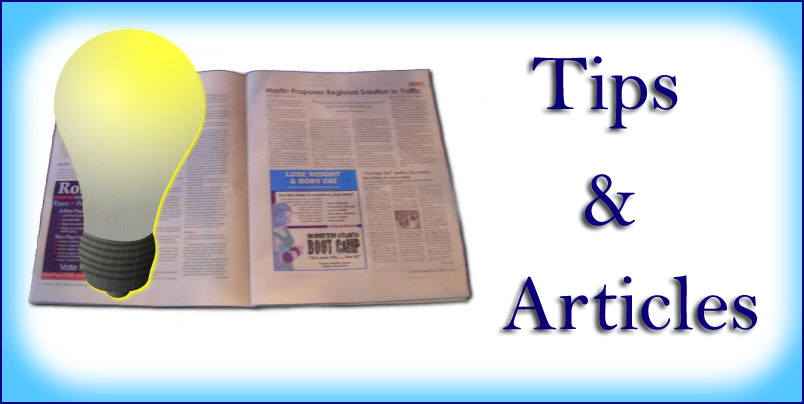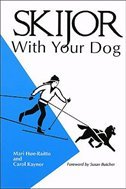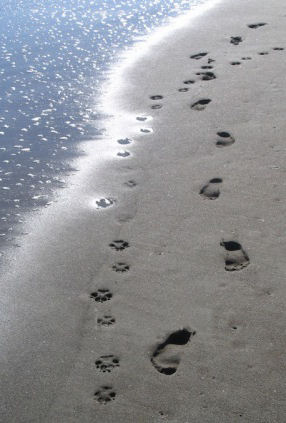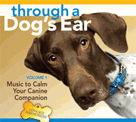



Tips Of The Month Archives- 2010
November 2010 - Before you call it "Epilepsy"....
October 2010 - Tricks, NO Treats
September 2010 - Memorable Moments
August 2010- Music To Calm The Savage Beast
July 2010 - House Training Aids Smaller Dogs
June 2010 - Show Me Your Nice White Smile!(Keeping Teeth Clean)
May 2010 - Obedience Training
April 2010 -Potty Training
March 2010 -The Dangers Of Clumping Cat Litter
February 2010 -STOP...Don't Eat That Poo! (Coprophagia)
January 2010- Does Your Dog Need Glucosomine?
Skijoring - Winter Fun for You and Your Dog
You must have a dog that is going to mature out to 40 lbs or more. Stationone Labs would be perfect for this sport. Training begins as a puppy with commands and ignoring distractions. To further educate you on Skijoring, go to this website on starting your puppy Getting Started Skijoring, and for training the mature dog, visit this website Training the Mature Dog. Available from Chapters/Indigo. Is your dog suffering from seizures or strange behaviour? Before you call it epilepsy, have your vet check for hypothyroidism! To know your symptoms of hypothyroidism I would like to refer you to Dr. Jean Dodds (DVM)article. Dr. Dodds is said to be the foremost authority on hypothroidism in the canine, and her methods and research have saved many a dogs life. Check here for the list of symptoms http://www.siriusdog.com/hypothyroid-dog-signs.htm, so if you think it is epilepsy it could be hypothyroidism. Check with your vet. Dr. Dodds research/test site is located at www.hemopet.org. Halloween is approaching and our pets safety is of great importance. Tempting as it may be, DO NOT SHARE and watch those curious noses, that they don't get into your children's treat bags! Tin foil and cellophane candy wrappers are a choking hazard for pets, in worst cases ingestion may cause intestinal blockage. Chocolate can be very dangerous for dogs and cats. Symptoms of significant chocolate ingestion may include vomiting, diarrhea, hyperactivity, increased thirst, urination and heart rate, and even seizures. Candies containing the artificial sweetener xylitol can be poisonous to dogs. Even minimal amounts of xylitol can create a sudden drop in blood sugar, which leads to depression, lack of coordination and seizures. In cases of significantly low blood sugar, liver failure has been known to occur. Avoid lollipops and hard candies when you are around your pet. Need a recipe for homemade treats for your pets? Check this site out!
Did you know that there is music recorded to sooth your dogs nerves? or to entice your cats curiousity? They even recorded a dogs calm panting to help with rehabilitating dogs in shelters so they settle in better. If you feel guilty about leaving your pet or perhaps need some quietness while you work at home, this could be an alternative that helps sooth your companion. Modelling the Ugo for us is our Web Lady's newest addition to her breeding program....Dazy Mae... Clean teeth and fresh breath, the sign of a healthy pet. One of the main indications that something is not right in your pets body is bad teeth and a terrible breath odor.
Hmmmm ever have a cat or dog that does NOT want it's teeth brushed?? You struggle and fight and hope you got most the plaque buildup, or maybe you wait and every so many months, you visit the vet, have Rover knocked out and get his teeth cleaned. Only to hear how he now needs teeth removed.
Today we are recommending Oxyfresh for your pets dental hygiene. Easy as 1, 2, 3, this product comes not just in a gel form as a toothpaste, but can be purchased in a liquid form. You simply add it to your pets water each day, or use a little spray bottle and spritz their teeth daily, to prevent plaque and tarter buildup.
For those pets who already have a plaque buildup, Oxyfresh, spritzed daily, will loosen it in about 3-4 weeks.
Visit the above link to their website and check it out.
1. Practice puppies name at feed time. Food is the highest motivator. This is an opportune time to get puppy used to his collar and lead.
Place collar on puppy and attach lead . Have puppy drag it around while you get puppys meal ready. Call puppy by name and place food under his/her nose and gently leading puppy to where he is going to eat. You will see he wil assocaite the collar/lead with food making it a positive thing for puppy.Then puppy is ready for Umbilical Cord Training. Attach lead to your waist (pull it through your belt) while cooking a meal or doing laundry have puppy follow along, teaching him calm submissive behaviour while spending normal activity. NOT PLAY, with you. Next, Recall- which is to have puppy come on command, have treats ready (treats should be dog food kibble different than puppys normal food). Now that he is used to the collar and lead, call puppies name and gently pull him to you, and reward with treat. Sits and Downs - the Sit and Down commands can be trained while walking with your puppy. When people approach to pet your puppy, have your puppy sit and then have the adult pet your puppy, therefore rewarding the sit action. For children, make the puppy do a down, have the child pet the puppy , again rewarding the down command and this will prevent puppy from jumping on people and then touching and therefore rewarding the jumping. Next the Stay command, Use a mat, (Use bath mat or dog bed) which is the puppies spot in your home. Have a lead attached to a solid base and clip puppy collar to prevent him from leaving the mat (or bed) as you give the stay cvommand. Leave him with a treat or a chew toy to keep him focused. To release puppy give the come command and release him from his mat. This does 2 things: teaches puppy to be mat trained in your home for calm submissive behaviour, along with teaching his Come/Stay Commands. Starting puppy on Pack leadership for good reading on this I recommend Cesar Millan's "Be A Pack Leader". This is EXTENSIVE. Read this book! To start you off, walking puppy with children, take care that children are out in front of puppy, this includes your baby in the stroller or carraige. Place puppy to the side of you using the Umbilical Cord Method, if holding onto the carriage or your children's hands. Remember who is in the lead , is considered by puppy as Pack Leader so make sure puppy stays at your side. If you currently have a dog. Walk puppy with your dog, to pack orient them. Hang a bell to ring on the door or doors your puppy will be going out of. Ring the bell, give the command "POTTY".so puppy knows what is expected of him. Mark a spot in your yard with newspapers your puppy has already soiled on (use rocks to hold the paper down) Give command "POTTY". When pup is finished his/her business, give praise and petting reward. Having one spot in the yard, puppy goes to makes for easy cleanup, and it can be sterilized with Bleach if puppy has any illness. To remain consistent. Mark on your calender when puppy goes.If you keep your feed time and exercise time regular puppy will be regular. Puppies do better at night because their metabolism slows down. deal potty times are when puppy first wakes, 5 minutes after eating meals, 20 minutes of active play, and every 2 hours. Instead of leaving water down when you are home, offer water every two hours to slow down pee times. Leave water down when house broke. When puppy is 12 weeks of age, he/she has 1 hour of bladder control and gains 1 hour every month as they mature. Consistancy makes perfect. Clumping cat litters hold great appeal for cat-lovers because they are so convenient. But what many pet-owners don’t realize is that two ingredients in most clumping cat litters have been implicated in diseases and even the deaths of many animals and humans. Sodium bentonite is often added as a clumping agent to traditional cat litters to create the “scoopable” clay litters on the market. Sodium bentonite acts like an expandable cement, which is why these litters should not be flushed: they swell to 15 to 18 times their dry size and can be used as grouting, sealing, and plugging materials. Cats often lick themselves after using the litter box, ingesting pieces of the litter. If litter gets inside them, it expands just as it does in the plumbing. Also, the dust from such litters can coat our cats’ lungs, leading to respiratory problems. The Hennepin Center for Poison Control in Minnesota has reported instances of poisoning in humans from chronic ingestion of sodium bentonite, so just imagine what effect it can have on our kitties! Quartz silica (sand), the other ingredient in most clumping litters, is a known carcinogen for both humans and household pets when inhaled. Switch your cat litter to one made from a plant-based material, better for your pet and for the environment. There are many commercially-available products using compacted pine shavings, cedar, newspaper, or corn cobs that make healthier alternatives. FROM: http://www.care2.com/greenliving/the-dangers-of-clumping-cat-litter.html In our cattery, we have always used pine shavings. It reduces odors and for those who want a little added odor "protection", sprinkle the bottom of the litterbox with baking soda. Also, it doesn't collect in kitty's paws, therefore preventing ingestion of their own feces and material. (The alternative of pine shavings is wood pellets that you use in a pellet stove) UGH! We run to stop them, your beloved pooch has grabbed it from the ground and is happily munching away, much to our disgust. "NO, don't KISS me!" Listed here are some reasons WHY your dog might eat it, and then some solutions on how to stop it.
These are just a few of the reasons. We have highlighted the most common. There are several products on the market today that do work. One is called SEP or Stop Eating Poop! And is available from your local pet store in most cases. Usually about a two week program will eliminate the problem, and can be repeated should the problem come back. A more natural way is to feed pineapple tidbits to your dog. There is an enzyme in the pineapple that makes the feces taste bad. Toy breeds can have a tsp a meal. Larger dogs need a couple of tsps in their meals. The big mistake is using glucosomine sulfate. This means that your dog will need twice or more the amount for it to work for him.
The glucosomine that you need to purchase from your local pharmacy is "Glucosomine Hydrochloride". Dogs weighing under 11 kgs use roughly 10 mg per pound daily (toy breeds). Cats - Same formula as toy breeds, under 11kg. Consult with your vet for exact dosage this is just a guideline.
Before you call it "Epilepsy"...
Tricks, NO Treats
Memorable Moments
 As a great idea, when you purchase your puppy or kitten, go to your favorite beach and take a photo of your footprints and theirs. Put a favorite quote, for example "Pets are the family we choose for ourselves." Or you could do "First Year" and continue the tradition until his last year!
As a great idea, when you purchase your puppy or kitten, go to your favorite beach and take a photo of your footprints and theirs. Put a favorite quote, for example "Pets are the family we choose for ourselves." Or you could do "First Year" and continue the tradition until his last year!
Music To Calm The Savage Beast
 Canine Lullabies Sooth List
Canine Lullabies Sooth List
Music therapy is said to help:
 Rhona (our weblady) uses Through a Dog's Ear and K-9 Lullabies for her yorkies and shih tzus. This is her take on it. "I use these Cd's even from before birth, for my puppies. They hear it in the womb, they hear it every night at bedtime from birth to when they leave. When my puppies go to their new homes, every client has mentioned how calm they are and that they settled into their new home so well. While this by no means takes the place of Alpha Leadership for dogs,in my opinion it does help them to be calmer."
Rhona (our weblady) uses Through a Dog's Ear and K-9 Lullabies for her yorkies and shih tzus. This is her take on it. "I use these Cd's even from before birth, for my puppies. They hear it in the womb, they hear it every night at bedtime from birth to when they leave. When my puppies go to their new homes, every client has mentioned how calm they are and that they settled into their new home so well. While this by no means takes the place of Alpha Leadership for dogs,in my opinion it does help them to be calmer."
 For further information, please visit "Through A Dog's Ear Website" and Canine Lullibies.
For further information, please visit "Through A Dog's Ear Website" and Canine Lullibies.
Alternative Potty Training For The Toy Dog
 UGODOG For those who are limited for areas to take your dog to pee, example Apartment dwellers, try this innovative alternative.
UGODOG For those who are limited for areas to take your dog to pee, example Apartment dwellers, try this innovative alternative.
Smile, Let Me See Your Teeth
Obedience Tips
Potty Training
The Dangers Of Clumping Cat Litter
STOP...Don't Eat That Poo! (Coprophagia)
Keeping your dog on a regular deworming program will eliminate the parasite reason.
Does Your Dog Need Glucosomine?
Dogs weighing 11-22kgs - 1000 mg daily.
Dogs weighing 23-45kgs - 1500mg daily
Dogs weighing Over 45kg - 2000mg divided into 1000mg doses, 1000mg morning and 1000mg evening.
http://www.ehow.com/facts_5748227_safe-use-glucosamine-sulfate-dogs_.html